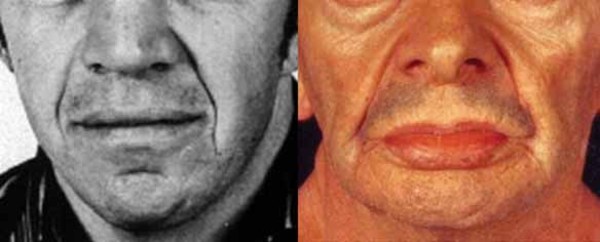

brittle bones (osteoporosis) – in adult life, this may develop if oestrogen isn't adequately replaced by HRT.underactive thyroid gland (hypothyroidism) – regular blood tests are needed to detect it early before it causes symptoms.kidney and urinary tract problems – this can increase the risk of developing urinary tract infections (UTIs) and high blood pressure.heart murmur – where the heart makes a whooshing or swishing noise between beats this is sometimes linked to a narrowing of the main blood vessel in the heart (the aorta) and high blood pressure.Turner syndrome is often associated with a number of other health conditions, including: hearing loss – this can occur in later life, but is often more severe and develops earlier than the normal age-related decline in hearing.recurring middle ear infections (otitis media) and glue ear during early childhood.cataracts – cloudy patches in the lens at the front of the eye.arms that turn out slightly at the elbows.a broad chest and widely spaced nipples.a particularly short, wide neck (webbed neck).There are many other symptoms or characteristics that can affect girls and women with Turner syndrome. Most girls need hormone replacement therapy (HRT) with oestrogen from around 10 to 12 years of age to begin breast development, and about 3 years later with added progesterone to bring on monthly periods.Ī minority of girls with Turner syndrome experience some physical changes naturally during puberty, but only a very small number become pregnant naturally. This means they're able to have a normal sex life following treatment with female hormones. it's likely they'll be need help to have a babyĮven though many women with Turner syndrome have undeveloped ovaries and are infertile, their vagina and womb develop normally.they may not start their monthly periods naturally.they may begin sexual development but not complete it.they may not begin sexual development or fully develop breasts without female hormone replacement therapy (HRT).Most girls with Turner syndrome do not produce enough of these sex hormones, which means: During puberty, a girl's ovaries usually begin to produce the sex hormones oestrogen and, once fully mature, progesterone. Ovaries are the pair of female reproductive organs that produce eggs and sex hormones. Read more about growth hormone treatment in Turner syndrome.

Treatment with additional high-dose growth hormone reduces this difference by about 5cm (about 2in) on average. On average, adult women with untreated Turner syndrome are 20cm shorter than adult women without the syndrome. Girls with Turner syndrome are typically short in relation to the height of their parents. After this, their growth slows down.Īt puberty, usually between 8 and 14 years, a girl with Turner syndrome will not have the normal growth spurt, even with female oestrogen hormone replacement therapy (HRT). Other features that may have developed in the womb include:īabies with Turner syndrome may grow at a normal rate until they're 3 years old.

They may be born with swollen hands and feet, caused by a build-up of excess fluid (lymphoedema) in the surrounding tissues, but this usually clears soon after birth. Girls with Turner syndrome also have distinctive features and associated health conditions, some of which may be apparent from birth. Almost all girls with Turner syndrome will grow up to be shorter than average, with underdeveloped ovaries.


 0 kommentar(er)
0 kommentar(er)
